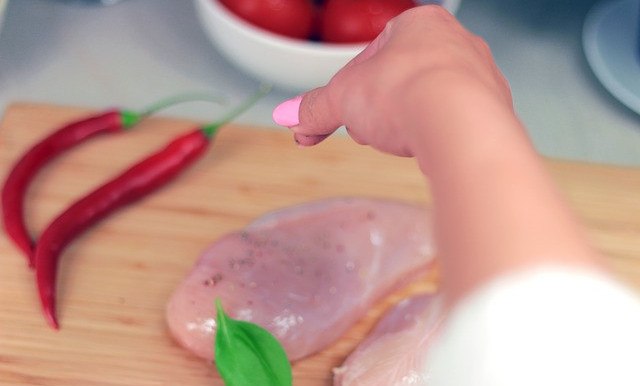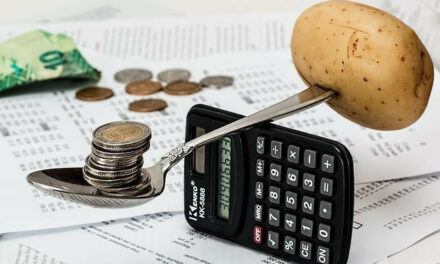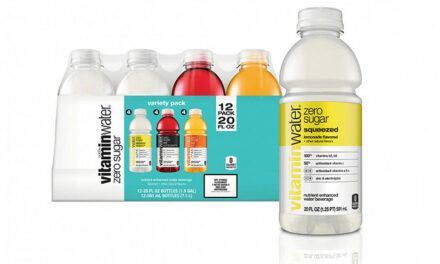This is a guide on chicken salt and how the chicken salt effect on diabetes. Particularly, we will be answering Is Chicken salt good for diabetics. And, when chicken salt is suitable for diabetics.
“Wait, what? Chicken salt? You mean, the normal plain salt, right?”
That is the surprising question I get whenever I go to a fast-food joint here in California, asking for my chips to be sprinkled with chicken salt. It is frustrating. It leaves me nostalgic about my stay in Australia, where almost every fast food joint has it as an option.
Is chicken salt made from actual chicken or not? This is a major argument and depending on the answer, says whether to classify it as vegan or non-vegan. Is it healthy? Is chicken salt good for diabetics? These are some of the questions that you will get to find out as you read this article too.
Back to the root of the matter, what is chicken salt?
What is Chicken Salt?
Chicken salt is a yellowish or orange seasoning that is made from a mixture of spices or condiments. It contains an actual chicken that is roasted, dehydrated, and then mixed with salt, garlic powder, onion powder, white pepper, and other spices of choice.
The ingredient make up of chicken salt varies and often depends on the person making it. Some add a dash of paprika, while some other person may add turmeric powder to the main ingredient. To each his/her choice and taste.
Some chicken salt brands promote their product as vegetarian. They argue that the “chicken” in the name was only because its original purpose was for salting rotisserie chicken and also to add some color (rotisserie chicken are colorless). So, their chicken salt may not contain any chicken but maybe a unique mixture of salt (any type), onion powder, garlic, herbs, and spices, etc. They can rightly call it vegetarian.
Tip: Chicken salt is different from Smoked Salt.
The History Behind Chicken Salt
Chicken salt originated from Australia. Its history is somewhat sketchy and is a source of controversy.
Some say that the Mitani family, an Australian family that produces spices and condiments, were the original creators of chicken salt.
An article published online on The Guardian website identified Peter Brinkworth
as the original creator of chicken salt. He was an ex-accountant who later inherited a farm from his parents. He seems to start producing chicken salt in the kitchen of a small retail shop attached to his home.
Tip: We previously covered how Chinen Salt can help diabetics. In some cultures, Berberine Salt is called Chinen Salt.
Unfortunately, due to his middle child suffering from cancer he had to sell the farm along with the retail shop to the Mitani family. The recipe for the chicken salt was among the things that were sold.
The original chicken salt contained paprika, chicken bouillon, monosodium glutamate, onion powder, celery salt, with some dash of curry powder.
Health Benefits of Chicken Salt
There are yet no identifiable health benefits of chicken salt.
Effects of Chicken Salt on Diabetes
Since chicken salt contains salt along with some other ingredients, as a diabetic, you should beware of excess intake of chicken salt in your food. That is because it can spike or raise your blood pressure.
As a diabetic, if at all you are to use chicken salt, use it sparingly.
Is Eating Chicken Salt Good for Diabetics?
There are many theories, arguments, debates on whether eating chicken is bad for diabetics. Here is the answer: chicken is good for diabetics when it is prepared and cooked right. It is also good when it is eaten in moderation.
Chicken is naturally high in protein and also low in fat. So, most of its part is good for diabetics.
Tips for preparing and cooking chicken for diabetics
- You should remove the skin of the chicken before start cooking.
- Limit frozen chicken as they may contain extra sodium. However, if you buy the air-chilled ones that’s a better choice as they contain fewer preservatives.
- Chicken breasts are the most preferred part of diabetics because they are the leanest part of the chicken.
- Consider substituting butter with olive oil, coconut oil, or cooking spray. That is because they are healthier and contain less total fat or healthier fats.
- Poach your chicken parts covered with water, in a pot over medium to low heat. This is to ensure that it is cooked with an internal heat of 1650C, for any bacteria to die off.
- Consider seasoning it with herbs and spices instead of salt or try out recipes that involve cooking with vegetables
How to Make Chicken Salt?
This video explains it all well.
Chicken Salt Recipes for Diabetics You Can Try Out
One major concern for diabetics is how to watch their carb and salt intake. You don’ have to worry, as these recipes are not only low carb, low fat, and have reduced salt content. They are super tasty!
1. Apple and Thyme Chicken (with Chicken Salt) Recipe.
Nutritional value: it contains 163 calories (including 9% calories gotten from fat), 1g fiber, 9g carbs, 27g protein, 66mg cholesterol, 2g total fat.
Ingredients:
- Two whole chicken breasts (half pound each). They should be fat-free (or remove the fat yourself if there is any)
- Cooking spray or olive oil
- 1 tart green apple with its core removed and sliced
- 1 shallot, cut into small pieces
- Quarter cup balsamic vinegar
- Fresh thyme sprigs to be used for garnishing
- 1 tablespoon fresh or dried thyme leaves
Directions:
- Preheat the oven to 375°F. Then, lightly spray the baking dish with cooking spray.
- Rinse chicken breasts well and pat dry them with paper towels.
- Sprinkle chicken breasts with chicken salt (if using) and pepper. Then, place the breasts in a single layer in the prepared baking dish.
- Arrange apple slices over and around the breasts.
- Then, sprinkle the dish with shallot and thyme leaves; pour on the balsamic vinegar.
- Bake for between 15 to 20 minutes, until the chicken, is changed to opaque throughout (cut to test).
- Place the cooked breasts on a platter and spoon apples and cooking juices on top. You could garnish with thyme sprigs, if desired. Serve at once.
2. Chicken Balti (with Chicken Salt)
Nutritional value: dietary fiber 11.2g, protein 26.1g, carbs 22.2g, etc.
Ingredients:
- Chopped onions
- Chicken breast
- Green pepper
- Garam masala
- Curry powder
- Chopped fresh coriander
- Rapeseed oil
- Celery
- Garlic
Click to find out exact measurement and directions in the below video:
3. Chicken Baked with Onions and Leeks (with Chicken Salt)
This is chicken baked alongside onions, leeks, ginger, etc. it is delicious and healthy.
Nutritional value: Total calories is 248
Ingredients:
- Leeks
- Onions
- Chicken breasts or thigh
- Garlic and ginger
- Fresh thyme
- Salt (optional)
- Dijon mustard
- Fresh rosemary
- Chopped shallot
Follow the directions in the below video.
4. Chicken Casserole (with Chicken Salt)
Nutritional value: Carbs 19.0g, protein 35.9g, dietary fiber 9.0g, total calories 293kcal,
Ingredients:
- Onions
- Green pepper
- Chicken breasts
- Fresh or dried marjoram
- Tomato puree
- Chopped tomatoes
- Black pepper
Follow the below video by Gordon Ramsay for directions:
Salt vs. Chicken Salt
The salt – table salt – is composed of sodium and chloride. Salt is used for various purposes ranging from it being used to cook, preserve, bake, make soap.
The sodium in the salt is about 40%. Our body makes use of sodium to perform its activities. Too much of it can be bad. That is the reason why health organizations and practitioners advise us to cut down on salt. That is because sodium regulates or balances our body’s fluid and excess salt can make the kidney retain too much fluid. That will consequently cause a spike in our blood pressure, foot edema (swelling), and many other complications.
Most of the food we eat, especially processed, canned, and grilled foods, contains more than enough salt. So, most times we are not short of salt instead, we eat too much salt more than the recommended 6g a day.
According to a report published by the American Heart Association (AHA), people who are diabetic are more likely to fight with cardiovascular disease than people who are not. This means that for diabetics, eating too much salt (which essentially is more sodium) increases the risk of developing cardiovascular disease.
What are Salt Alternatives for Diabetics?
If you are a health freak or someone concerned enough about his or her health, then you would have heard of salt alternatives.
Salt alternatives simply mean any other substance that can substitute for salt “sodium”.
Some Examples of Salt Alternatives
The most popular is potassium chloride. There are other brands of salt alternatives that contain some quantities of it.
You should note that potassium chloride has a bitter metallic taste. It should only be used in foods that can cover their taste. Here are some natural herbs and spices that can serve as an alternative to salt:
- Thyme
- Ginger
- Nutmeg
- Cinnamon
- Parsely
- Tumeric
- Sage
- Paprika
You can try herb and spice mixes or blends. Do check their nutrition labels, for any added salt.
Other salt alternatives are:
- Kosher salt
- Other varieties of sea salt
- Himalayan salt
Are Salt Alternatives Safe for Diabetics?
People with diabetes are often advised to switch to potassium chloride as a salt substitute. Well, ‘potassium’ can lower blood pressure. For people without any underlying medical condition, using potassium as a salt alternative may be safe. But the point is, what many people don’t know is that the ‘potassium’ in the potassium chloride form can interact with the medications you are taking for diabetes, heart conditions, high blood pressure, etc.
Tip: Do you think Epson Salt Baths can lower blood pressure?
So, the answer to the question is, it is not always safe for people with underlying medical conditions like diabetes. Before you take any salt alternatives, please consult your doctor.
Myths on Eating Salt as a Diabetic
Many myths are surrounding eating salt as a diabetic and together, let’s debunk some of them.
Myth #1: Salt can cause diabetes.
Eating salt, which is sodium chloride, cannot directly cause diabetes. You saw earlier that it is the “sodium” in it that can cause an actual problem and which is not diabetes. It does so by raising your blood pressure above normal. This can lead to other complications like high blood pressure, stroke, etc.
As a diabetic, you are at risk of developing high blood pressure. That is why you are advised to lower your salt intake.
Myth #2: Eating Sea salt is a better salt alternative.
Sea salt is the same as table salt in terms of sodium content. The only difference lies in their method of processing. Sea salt is just evaporated seawater, which most times retain some minerals hence their unique flavor, while table salt is found underground and then processed.
Myth #3: Food prepared without salt is not tasty.
Does it seem to you that any food without salt may taste bland? That is because most of us have become too accustomed to food prepared with salt. Well, don’t worry. You will see that after some time of cooking without salt and instead of preparing food with herbs and spices, your taste buds will adjust. That you will think that food prepared with salt is “too salty” to you.
Tips for Eating Salt as a diabetic
- Avoid processed foods. Cook food from scratch and add salt sparingly or not at all.
- To add some flavor to your food, you can try cooking with herbs and spices, as I mentioned earlier.
- Avoid the urge to sprinkle some salt on cooked food. To make it easier for you, remove salt shakers from the dining table or near the place you eat.
- Eat more fresh fruits, vegetables, and meats.
Conclusion
As a diabetic, you have to watch out for what you take in. Sometimes it can seem to be a lot of work and you may think that you will never get to enjoy tasty meals. Well, with a thought out of the meal plan, your food can be delicious and healthy as well.
If you are like me that wants to sprinkle chicken salt or normal salt on just about everything. You may have to take it easy, especially if you are diabetic. Experiment with herbs and spices. They are healthier and can add flavor to your food.














